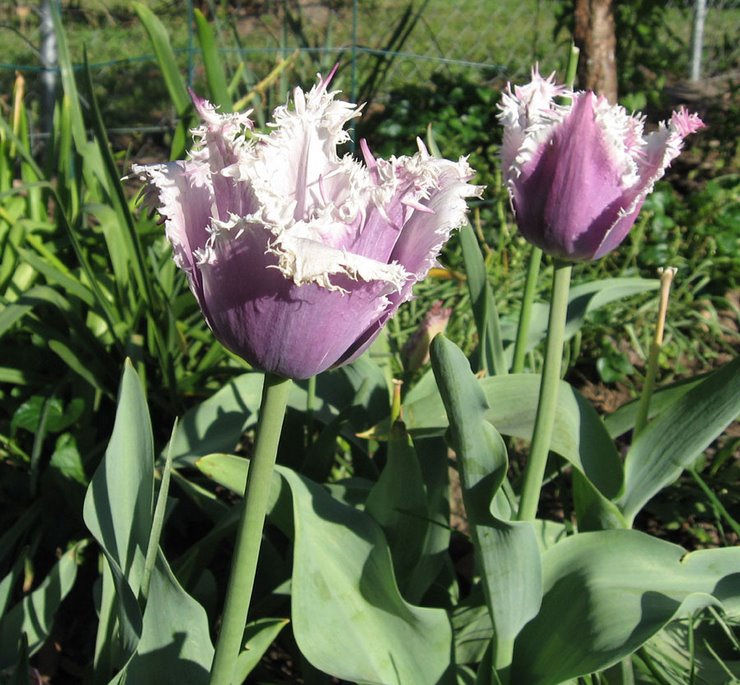Over the weekend I emptied my second compost tumbler, and spread the contents over a flower bed and two raised veggie beds. The flower bed is already planted, so there it will serve as a layer of mulch to help retain soil moisture, as it slowly breaks on down and is incorporated into the soil. The raised beds in the vegetable garden are those where spring crops are finishing up, and I will soon be replanting. As I pull out the spent plants, I'll dig the compost into the top several inches of soil, to re-energize it for the next crop I plant.
I immediately reloaded the compost tumbler with a new batch of material to be composted. I always have lots of stuff waiting to be composted, and the tumbling compost bins process it much faster than the stationary bin.
I keep a wheeled plastic trash bin specifically to collect things for composting right by my back door. Since it's so conveniently close, it makes it easier in a busy schedule to get compostable stuff set aside from normal trash. I find it really helps keep me on task when I set up a system to be convenient, and where I'll see it regularly as a reminder.
Today, I rolled that bin back to where the compost tumblers are set behind the garage, and refilled the one I'd just emptied. When you're starting a new batch of compost, it's best to keep a little of the finished compost to mix in with the new stuff, to innoculate it with the proper micro-organisms to jump-start the composting process. As I moved materials into the composter, I made sure that everything was chopped or shredded into relatively small pieces, so that it could break down more quickly. Every so often, I wet down the stuff a bit. You want it as damp as a wrung-out sponge, not soggy.
For composting, it's best to have at least three cubic feet of material piled together. You also need to have about 2/3 "brown" or carbon-rich materials like dry leaves, shredded paper or cardboard; and the other third "green" or nitrogen-rich materials. These might be fruit and veggie scraps, grass clippings from mowing, coffee grounds, or manure (from herbivores only!). Try to have a variety of materials for your compost, as it will yield a more nutrient-rich finished compost for your garden.
Other than in the fall leaf-season, the majority of my compost materials come from my two bunnies. I use a pelleted recycled paper litter, which is a "brown," and the bunnies' contributions count as a "green." The proportions of brown to green are about right, and I could produce compost with just that. But it's best to have that variety of sources, so I am glad that a couple of people save their coffee grounds for me. You can use it, paper filter and all; just tear up the filter a bit so it can break down faster. I also have some fruit and vegetable scraps, and tea bags. This time there were also some styrofoam shipping peanuts, of the kind made from a plant starch, so it can be composted. (To check, wet one of the shipping peanuts with water, and if it dissolves, it's the compostable kind.)
For those of us with mold allergies, but don't have anyone else to do this for you, you'll need to take a few precautions before working with compost. The best thing is to wear gloves and a dust mask, and cover your hair with a scarf or washable hat. After you're done, change your clothes and wash those you were wearing. This will minimize your exposure to mold.
Once I filled the compost tumbler a little over half full, I closed it up and gave it a turn or two. You need to leave room for the stuff to tumble and stir around when you turn it. I'll turn it a time or two about every morning, and in a month or so, I'll have another nice batch of compost ready for the garden.

No comments:
Post a Comment